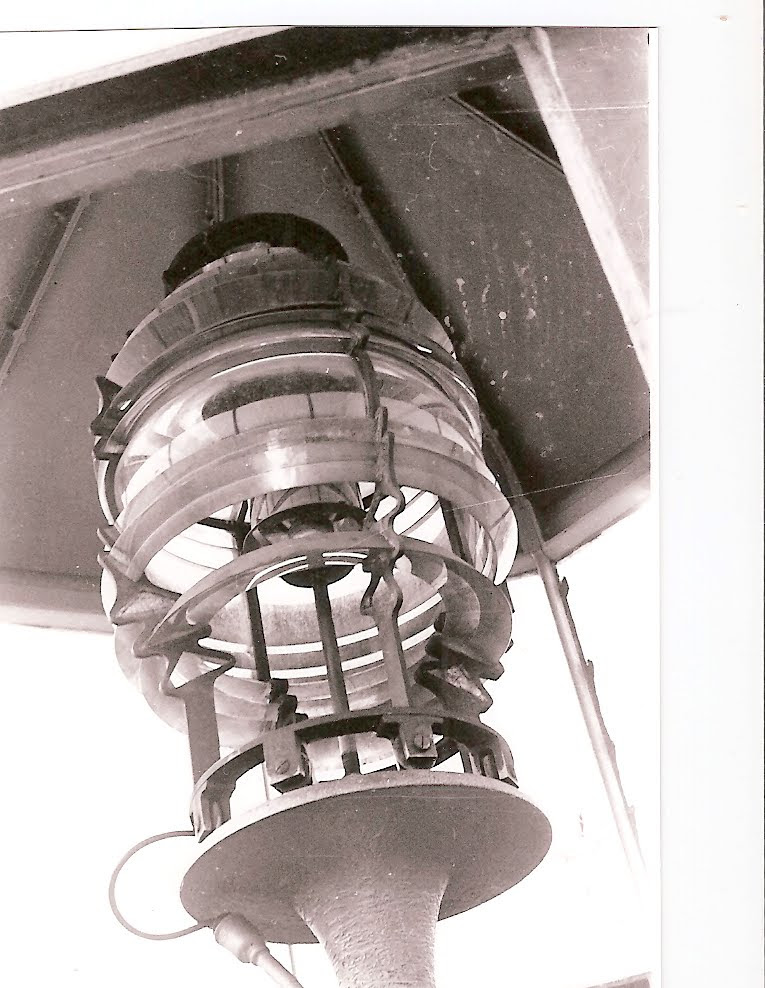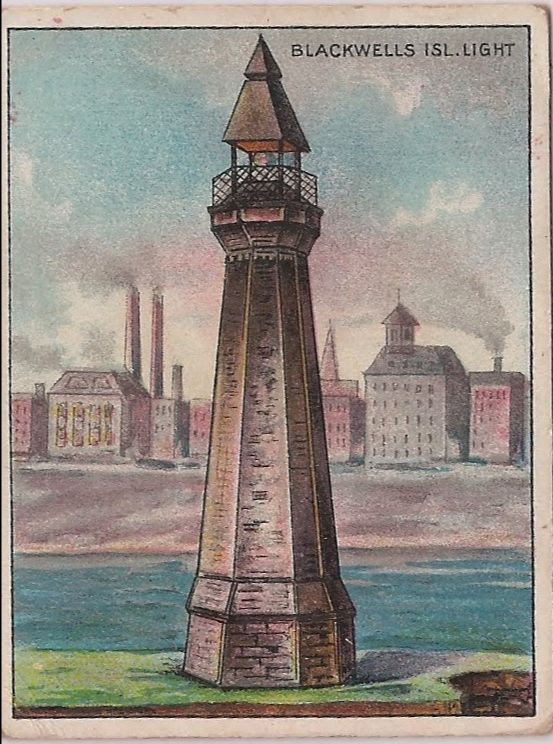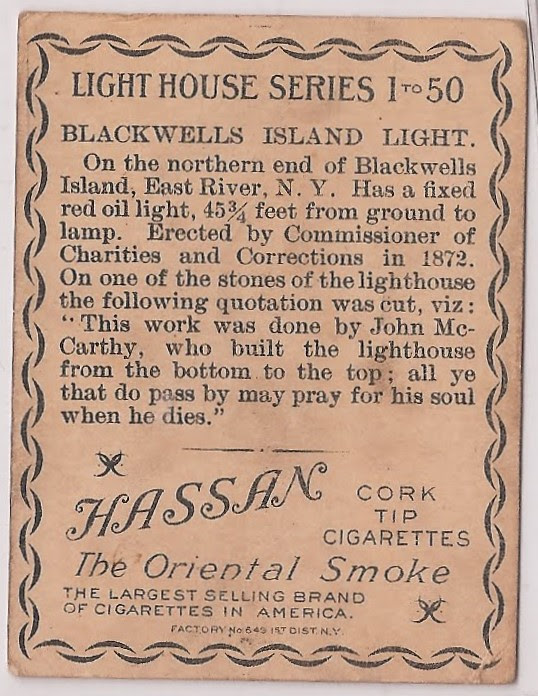Wednesday, April 14, 2021 – OUR TREASURED LIGHTHOUSE WILL SOON BE A BEACON AGAIN


THE RESTORATION
OF THE
LIGHTHOUSE
WEDNESDAY, APRIL 14, 2021
336th ISSUE
Our landmark lighthouse will soon be restored and a replication of the original top will be installed.
Architect Thomas Fenniman has designed a restored version of the structure that will stabilize and restore the structure. Fenniman has had vast restoration experience including the RIHS Visitor Center Kiosk, Chapel Narthrax, Chapel Roof all on the Island.

Th original Lighthouse Park from Metropolitan Hospital


Current lighthouse and design for newly restored structure

THE DESCRIPTION OF THE LANDMARK LIGHTHOUSE
NYC LANDMARKS PRESERVATION COMMISSION
This small Lighthouse stands at the northern tip of Roosevelt Island on a projection of land which was at one time a separate island connected to the main land by a wooden bridge. Local legend maintains that during the 19th century a patient from the nearby Lunatic Asylum was permitted to build a stone fort on this outcropping as he feared an invasion by the British. When plans were formulated to build the Lighthouse, this patient was allegedly persuaded to surrender the fort only after much cajoling and a bribe of bogus money. The tale continues that the patient himself demolished the fort and built the new Lighthouse, carving the inscription:
Lighthouse inscription:
This is the work
Was done by
John McCarthy
Who built the Light House from he bottom to
the Top All ye who do pass by may
Pray for his soul when he dies.
While construction of the Lighthouse cannot actually be credited to the diligent Mr. McCarthy, the warden of the Lunatic Asylum did specifically mention in his annual report of 1870 an “industrious but eccentric” patient who had built near the Asylum a large section of seawall, thereby reclaiming a sizable piece of land. The warden further remarked that this patient “is very assiduous, and seems proud of his work, and he has reason to be, for it is a fine structure, strong and well built.” Whether or not this patient was the model for the legend of the fort and Lighthouse builder, a connection of the Lighthouse and the Lunatic Asylum is a historical fact. In May 1872, City official resolved to “effectually light” the Asylum and the tip of the island. The following September, the Lighthouse was completed , with lamps furnished by the U.S. Lighthouse Service. The stone structure was built under the direction of the Board of Governors of the Commission of Charities and Correction, the body which administered the numerous City institutions on the island., At that time. The supervising architect for this Commission was James Renwick, Jr.
James Renwick, Jr. (1818-1895), was son of a highly regarded professor at Columbia College. He began his notable career in 1836 as an engineer supervising the construction of the great Distributing Reservoir at 42nd Street for the Croton water supply system. In 1840, his drawings were selected in a competition for the design of Grace Church, which, at that time, was New York’s wealthiest and most fashionable congregation. Renwick, only twenty-five and entirely self-trained as an architect, achieved instant recognition. During his long and highly successful career he designed many important buildings, including the Smithsonian Institution in Washington, DC, the Main building at Vassar College in Poughkeepsie, the William E. Dodge Villa (now Greyston Conference Center) and St. Patrick’s Cathedral-both designated landmarks, as is Grace Church. As an art collector and yachtsman, Renwick’s association with the Charities and Corrections Board, in all likelihood, had philanthropic motivations. He designed the Workhouse, City Hospital and Smallpox Hospital on Blackwell’s Island (as Roosevelt Island was then known); the Inebriate and Lunatic Asylum on Ward’s Island; and the main building of the Children’s Hospital on Randall’s Island. He also designed several smaller structures, among them, the Lighthouse on Roosevelt Island.
The Lighthouse is approximately fifty feet tall and is constructed of rock-faced, random gray ashlar. The stone (gray gneiss) was quarried on the island itself, predominately by convict labor from the Penitentiary on the island, and was used for many of the institutional buildings erected there. The Lighthouse is encircled by a small yard paved with flagstone. An entry walk at the south is flanked by stone bollards which have pyramidal tops carved with simple trefoils. The Lighthouse is octagonal in plan and vertically organized according to the tripartite division of the classical column-base, shaft and capital. The base is separated from the superstructure by a series of simple moldings which are interrupted to the south side by a projecting gable above the single entrance doorway. This doorway, which an incised pointed arch above a splayed keystone with flanking corbels, is designed in a rustic version of the Gothic style. The stepped stones of the Lighthouse are pierced above the doorway by two slit windows which light the interior staircase. The top of the shaft is adorned with Gothic foliate ornamentation in high relief, separated by simple moldings from the brackets which support the observation platform. These elements form the crowning feature of the Lighthouse. The octagonal lantern, originally surmounted by a picturesque conical roof is of glass and steel. It is surrounded by a simple metal railing.
The rock-faced stone and the sparing uses of boldly scaled ornamental detail give the Lighthouse the strength and character of a medieval fortification. In its isolated setting, the Lighthouse is a prominent and dramatic feature of Roosevelt Island.


Metropolitan Hospital Nursing Students relax at the Lighthouse Park


The stairway inside the Lighthouse. Original lamp in position, now removed
UPCOMING NYPL AND RIHS ZOOM PROGRAMS
Tuesday, April 20, 7 p.m.
“Mansions and Munificence: the Gilded Age on Fifth Avenue”
REGISTER WITH THIS LINK: https://www.nypl.org/events/programs/2021/04/20/mansions-and-munificence-gilded-age-fifth-avenue
Guide, lecturer, author and teacher of art and architecture, Emma Guest-Consales leads a virtual tour of the great mansions of Fifth Avenue. Starting with the ex-home of Henry Clay Frick that now houses the Frick Collection, all the way up to the former home of Andrew Carnegie, now the Cooper-Hewitt Museum, she takes us through some of the most extravagant urban palaces the city has ever seen.
WEDNESDAY PHOTOS OF THE DAY
WHICH DO YOU REMEMBER?
SEND US YOUR STORIES ABOUT MOM’S KITCHEN
SEND OUR SUBMISSION TO
ROOSEVELTISLANDHISTORY@GMAIL.COM

TUESDAY PHOTO OF THE DAY
SOLDIERS AND SAILORS MONUMENT
JAY JACOBSON, ANDY SPARBERG, SUSAN RODETIS, M. FRANK, VERN HARWOOD ALL GOT IT!

IT IS NEVER TOO LATE TO JOIN THE RIHS.
YOUR MEMBERSHIP SUPPORTS ALL OUR ACTIVITIES
JOIN TODAY AND SHOP THE KIOSK WITH A 10% DISCOUNT ON ALL PURCHASES.
JOIN ON-LINE AT RIHS.US OR MAIL IN THIS FORM.

Text by Judith Berdy
Thanks to Bobbie Slonevsky for her dedication to Blackwell’s Almanac and the RIHS
Thanks to Deborah Dorff for maintaining our website
Edited by Melanie Colter and Deborah Dorff
All image are copyrighted (c) Roosevelt Island Historical Society unless otherwise indicated
RIHS ARCHIVES
NYC LANDMARKS PRESERVATION COMMISSION
RIHS (C) FUNDING PROVIDED BY ROOSEVELT ISLAND OPERATING CORPORATION PUBLIC PURPOSE GRANTS CITY COUNCIL REPRESENTATIVE BEN KALLOS DISCRETIONARY FUNDING THRU DYCD


Copyright © 2021 Roosevelt Island Historical Society, All rights reserved.Our mailing address is:
rooseveltislandhistory@gmail.com



Leave a comment